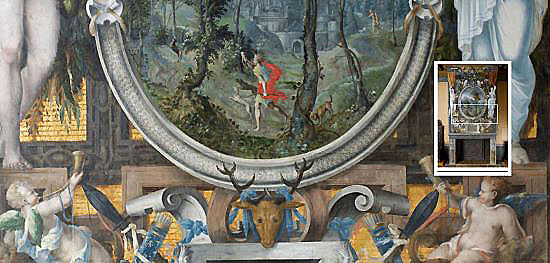MENU: 2.6. Nobles gods & heroes
TOWARD 1500, EXPLORERS' DISCOVERIES LEAD TO NEW SOURCES OF INCOME AND SO TO A BOOM THAT UNDERMINES THE SOCIAL SYSTEM
Nascent capitalists gain the means to challenge the hereditary landowners, nobles who draw their wealth from peasant labor and define themselves as warriors.
 |
Discoveries in 1502 / zoom |
The earliest known map of the Age of Discovery
They wear armor:
- For their portraits
- And for their tombs.
Design of the Funeral Monument to Henri II de Montmorency in Moulins by Michel Anguier, 17th century / zoom
For the costume of antiquity, please scroll on.
- Even a painting has nothing to do with fighting, the artist introduces an idealized soldier in Roman garb:
 |
Saint Peter Preaches, Saint-Merri church, toward 1600 / zoom |
Their martial upbringing and values of personal honor and loyalty are irrelevant to commerce. They lose their privileges should they engage in it (the next page says more), and in any case most lack the funds to do so.
They cannot adapt to capitalism.*
*For a deeper discussion, please click and scroll down.
But all social classes accept their superiority as innate,
due to innumerable aspects of daily life.
In brief
































